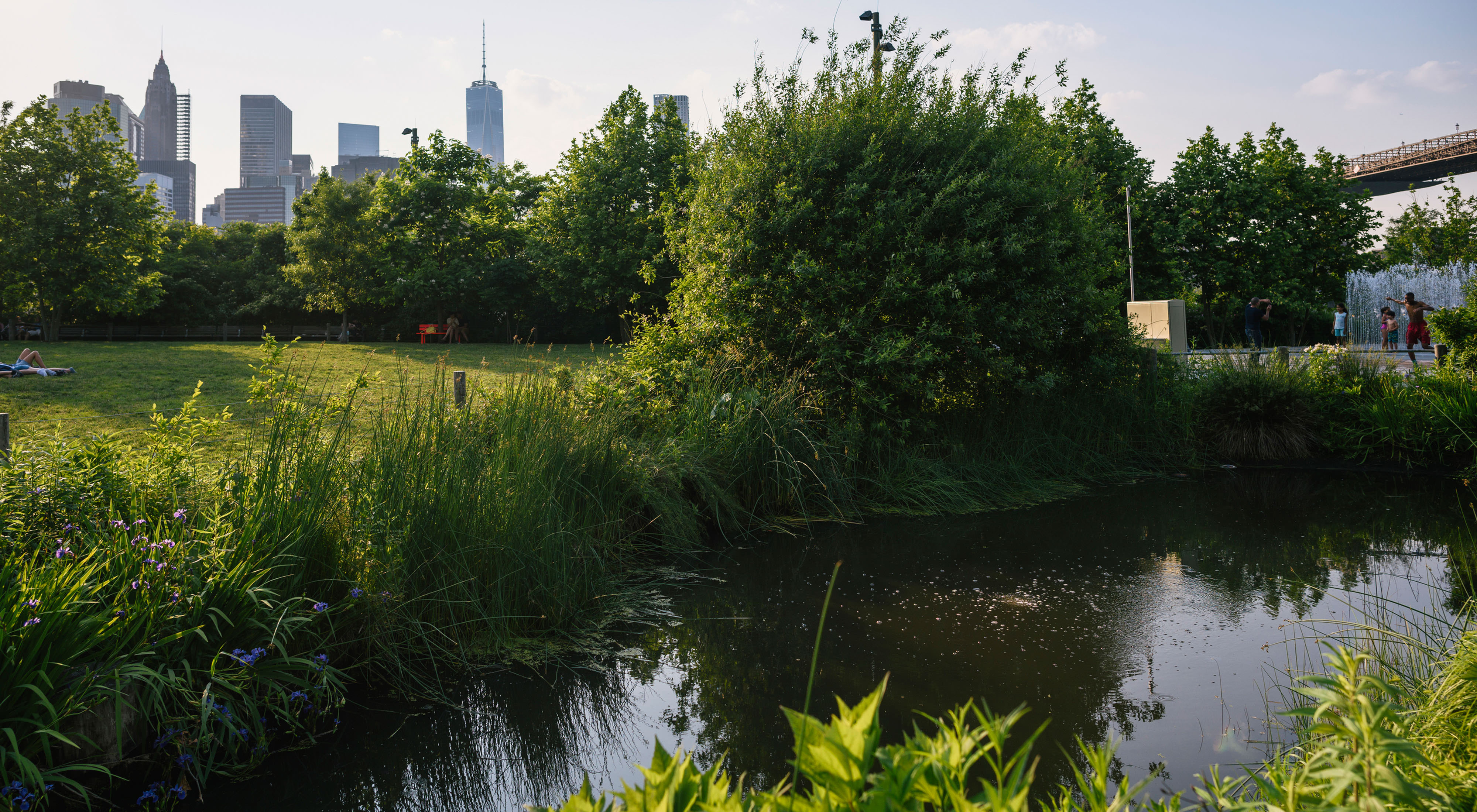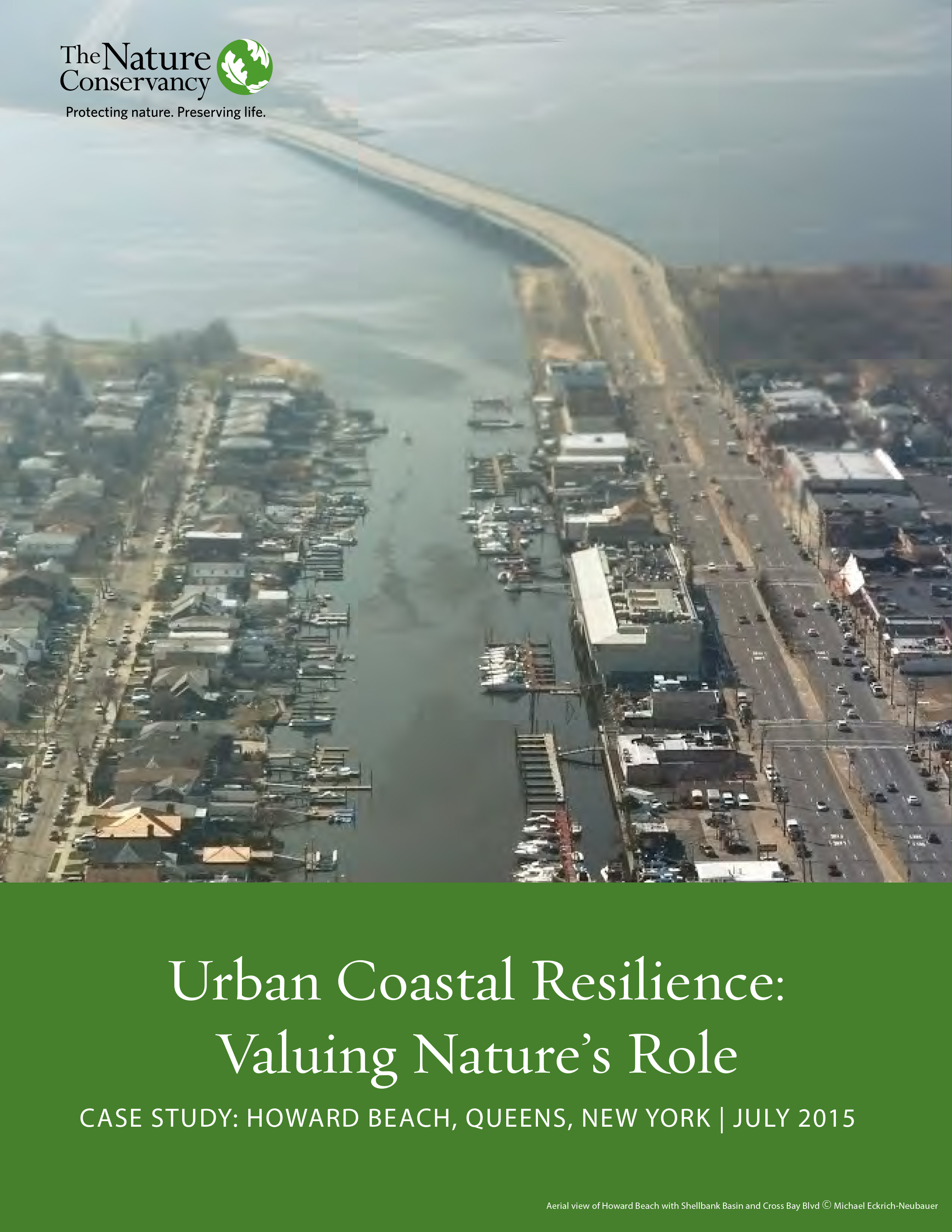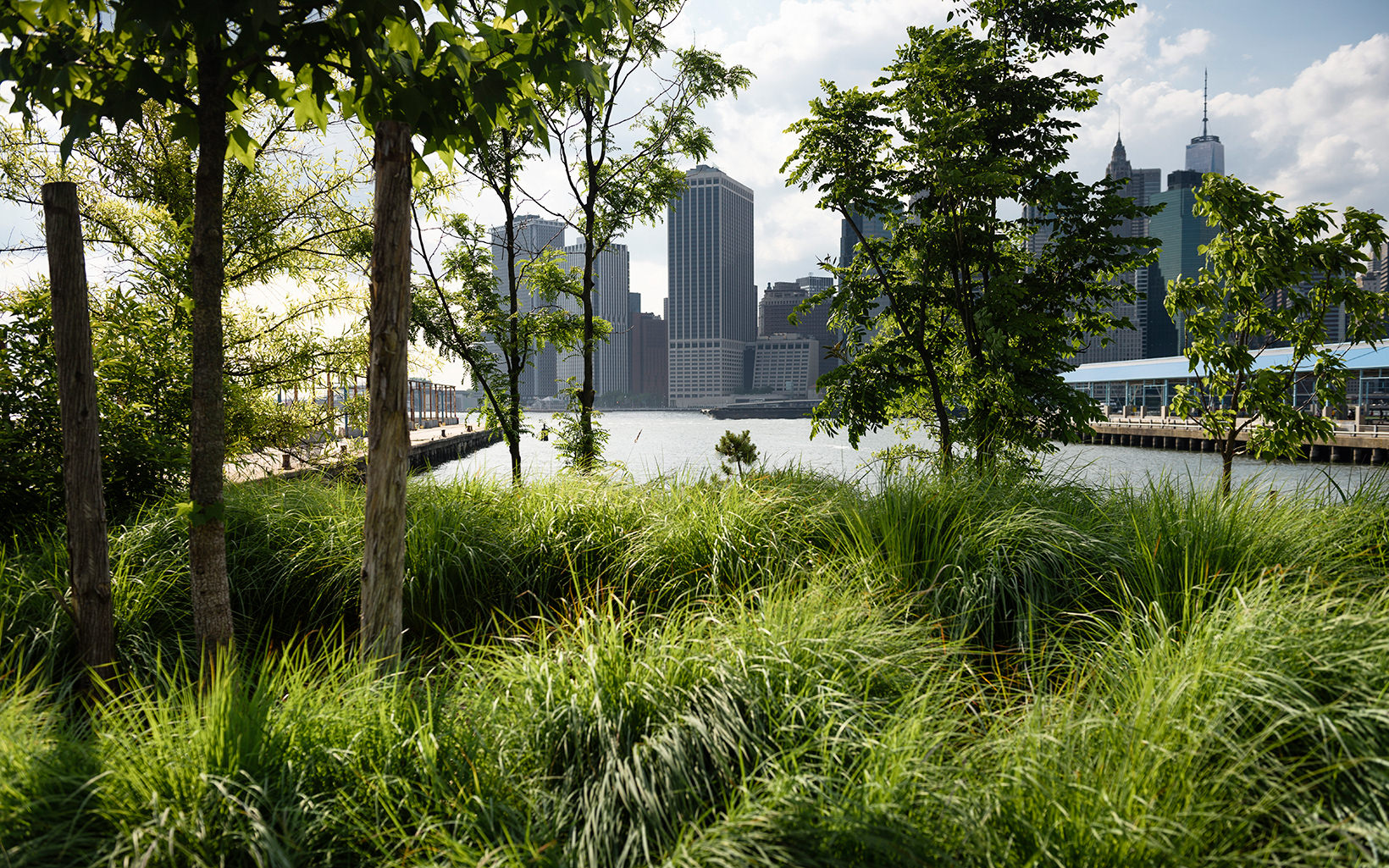Download
In the wake of Hurricane Sandy, the New York City Special Initiative for Rebuilding requested that The Nature Conservancy undertake a project evaluating the role of nature and nature-based infrastructure in protecting communities from some of the impacts of climate change, which was the inception of the Urban Coastal Resilience Report.
The community of Howard Beach, Queens, was selected as a case study for the project because this neighborhood, hit hard during Sandy, is low-lying and densely populated. Although Howard Beach was used in the analysis, the study methodology is applicable to coastal communities across the City and around the globe.
Highlights of the Urban Coastal Resilience Report
- Nature-based features (such as mussel beds and restored marsh) can be successfully used in a dense, urban setting in combination with “gray” defenses (like sea walls and flood gates) to provide efficient and cost-effective protection from sea level rise, storm surge and coastal flooding, and;
- There are rigorous and valid ways to value the contributions of nature.
For the report, experts analyzed several infrastructure alternatives, ranging from purely nature-based solutions to one consisting of only gray defenses. The study found that combining natural and gray defenses holds the most benefits. Analysis shows that a hybrid alternative could result in avoided losses in this one neighborhood of up to $244 million from the current 1-in-100 year storm event. Demonstrating the benefits of a hybrid approach in terms of future cost-avoidance provides a strong basis for making investments that use both nature-based and gray systems in community resiliency that are critically needed today.
The best conceptual alternative and most cost-effective, according to the study, utilizes restored marsh habitat on the coast, hard toe mussel beds along the shoreline, floodgates and sea walls to protect against storm surge and rising sea levels and rock groins on the shoreline to help prevent erosion. The general concept of this alternative is illustrated in an infographic that shows the approximate location of each type of infrastructure as analyzed in the study.
Why This Matters Now
“Hurricane Sandy left a wake of destruction when it struck New York in October 2012. The storm revealed just how vulnerable we are to climate change, how much is at stake, as well as how nature can play a critical role in helping to protect us,” said Bill Ulfelder, executive director of The Nature Conservancy in New York.
“Man-made infrastructure used to be the default for most discussions about protecting at-risk communities. Now, science is showing us that natural defenses like dunes, wetlands, mussel beds, forests and oyster reefs can help to keep us safe from future disasters by absorbing floodwaters, reducing wave energy and helping defend against storm surges, with the added benefits of increasing wildlife habitat, absorbing carbon pollution that is the cause of climate change, and making our city more aesthetically pleasing and livable.”
What Can You Do
You can support this important work by making a secure, online donation to The Nature Conservancy in New York.
Funding for this report was provided by The JPB Foundation, The Rockefeller Foundation and TD Bank.



